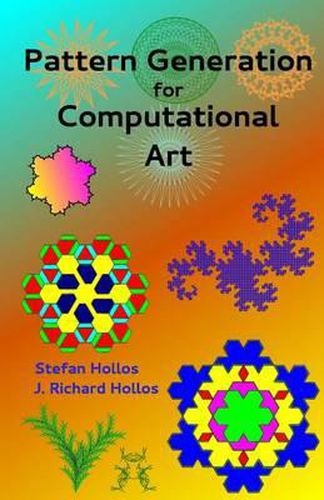Readings Newsletter
Become a Readings Member to make your shopping experience even easier.
Sign in or sign up for free!
You’re not far away from qualifying for FREE standard shipping within Australia
You’ve qualified for FREE standard shipping within Australia
The cart is loading…






This book shows how to turn computer generated number sequences into intricate visual patterns. The sequences are strings of the binary numbers 0 and 1 which are translated into drawing instructions to produce beautiful patterns. These patterns provide a glimpse of the hidden platonic world of mathematics.
The book starts with Christoffel words and Sturmian sequences which are derived from the continued fraction expansion of rational and irrational numbers. How this is done is explained very clearly in the book and very little mathematical background is required from the reader.
The book moves on to Automatic sequences such as the Thue-Morse and Rudin-Shapiro sequences which are various ways of calculating digital roots of the integers. The first part of the book ends with sequences generated by folding paper.
Translating a sequence into drawing instructions is done using a finite automaton. This is a very general method for translating sequences that allows the same sequence to produce many different patterns. No prior experience with finite automata is necessary. All the background needed is explained in the book.
The second part of the book is devoted to L-systems which is another way of producing a string of drawing instructions. Here the strings are produced by an iterative symbol substitution process. The images produced often have a self similar fractal structure. It is possible to create many images that resemble plants. The book shows how to use an automaton and context free grammars to systematically look at all L-systems of a particular type.
All software used to create the sequences and images in the book are free for readers to download from the book’s website at: http: //www.abrazol.com/books/patterngen/
The software consists of small programs written in the C programming language that can be run on all major operating systems. Inside the book are 327 images serving as inspiration for the kinds of images you can create. There are an infinite variety of images you can generate using the software that comes with this book, providing a computational image generation lab.
$9.00 standard shipping within Australia
FREE standard shipping within Australia for orders over $100.00
Express & International shipping calculated at checkout
This book shows how to turn computer generated number sequences into intricate visual patterns. The sequences are strings of the binary numbers 0 and 1 which are translated into drawing instructions to produce beautiful patterns. These patterns provide a glimpse of the hidden platonic world of mathematics.
The book starts with Christoffel words and Sturmian sequences which are derived from the continued fraction expansion of rational and irrational numbers. How this is done is explained very clearly in the book and very little mathematical background is required from the reader.
The book moves on to Automatic sequences such as the Thue-Morse and Rudin-Shapiro sequences which are various ways of calculating digital roots of the integers. The first part of the book ends with sequences generated by folding paper.
Translating a sequence into drawing instructions is done using a finite automaton. This is a very general method for translating sequences that allows the same sequence to produce many different patterns. No prior experience with finite automata is necessary. All the background needed is explained in the book.
The second part of the book is devoted to L-systems which is another way of producing a string of drawing instructions. Here the strings are produced by an iterative symbol substitution process. The images produced often have a self similar fractal structure. It is possible to create many images that resemble plants. The book shows how to use an automaton and context free grammars to systematically look at all L-systems of a particular type.
All software used to create the sequences and images in the book are free for readers to download from the book’s website at: http: //www.abrazol.com/books/patterngen/
The software consists of small programs written in the C programming language that can be run on all major operating systems. Inside the book are 327 images serving as inspiration for the kinds of images you can create. There are an infinite variety of images you can generate using the software that comes with this book, providing a computational image generation lab.